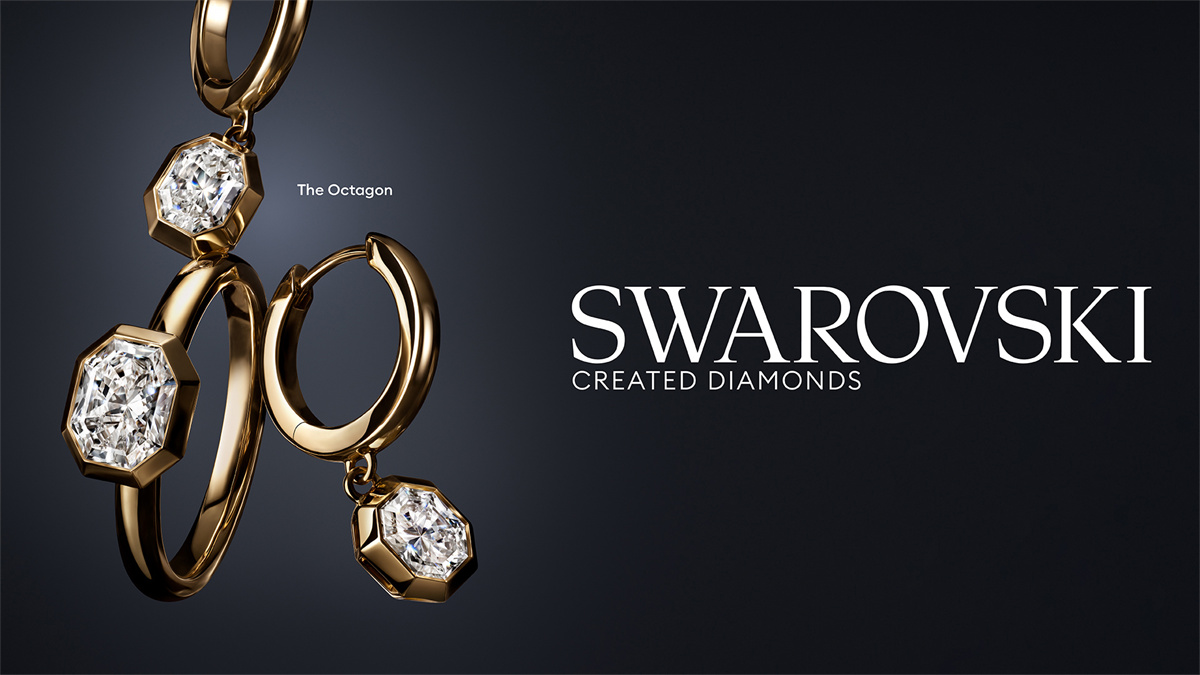In late January this year, Tiffany & Co.’s Vice President of high jewelry and Chief Gemologist, Victoria Wirth Reynolds, was nearing the end of a business trip in Bangkok. Before departing, she arranged a last-minute meeting with a gemstone dealer. During the meeting, the dealer presented her with a truly irresistible treasure: an enormous kunzite weighing over 7,500 carats.
She immediately called Tiffany & Co. CEO Anthony Ledru to discuss the purchase. ““We decided in a bit more than a nanosecond,” Ledru told The New York Times. “It was 10 seconds.”
Now, this extraordinary 7,500-carat kunzite is set to begin a new chapter in its story.
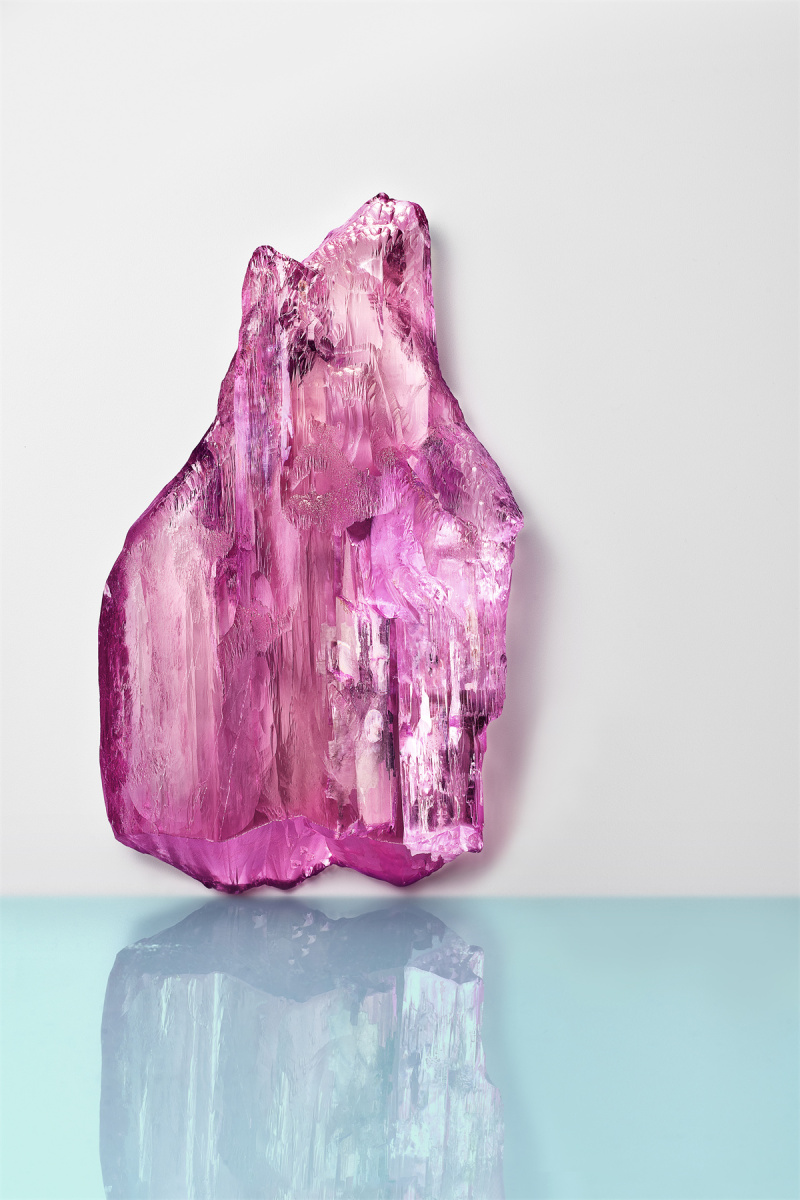
Above: The kunzite crystal weighing over 7,500 carats
Tiffany recently announced that this rough kunzite will be meticulously cut by its master artisans into 10 custom gemstones, each to be set into a limited-edition piece from the 60th anniversary “Bird on a Rock” brooch collection. Clients will also have the opportunity to collaborate with Victoria Wirth Reynolds on the bespoke cutting of the kunzite.
What appeared to be a serendipitous gemstone encounter is, in fact, a continuation of Tiffany’s century-long legacy of gem discovery—a strategic move that also reinforces the brand’s authority in high jewelry.
A 10-Second Decision: Tiffany’s Enduring Bond with Kunzite
“We thought this was such a Tiffany story. That’s why it took zero time.”remarked Anthony Ledru when reflecting on the acquisition of the 7,500-carat kunzite.
Such a decisive purchase is rooted in Tiffany’s longstanding connection with this gem.
As Victoria Wirth Reynolds explained, “Introduced by Tiffany’s first Chief Gemologist Dr. George Frederick Kunz over a century ago, this remarkable Tiffany & Co. ‘legacy gemstone’ has become an enduring symbol of our commitment to procuring the world’s most exceptional gemstones.” She added, “Kunzite holds a special place in Tiffany’s history and in my heart.”
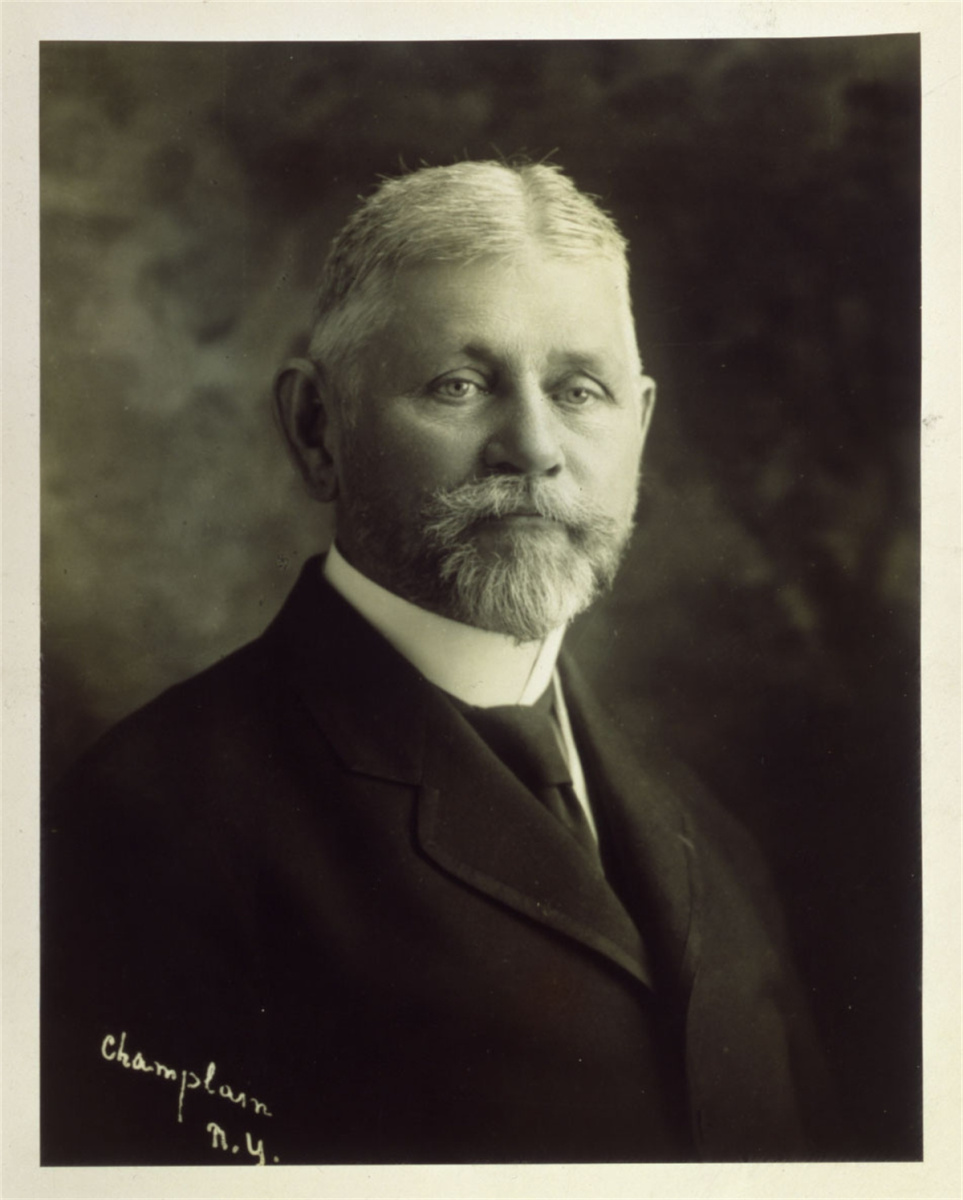
Above: Dr. George Frederick Kunz
In 1879, at just 23 years old, Dr. George Frederick Kunz joined Tiffany & Co. as the brand’s very first Chief Gemologist.
One of Dr. Kunz’s primary missions was to search the world for precious gemstones on behalf of Tiffany. His explorations spanned the United States and far beyond—from Tiffany’s home in Manhattan to the California mountains, Montana valleys, New Jersey rivers, Russia’s Ural Mountains, and the deserts of Africa.
In 1902, an unidentified pinkish-purple crystal sample was discovered in San Diego County, California, and was soon sent to Dr. Kunz. Previously, known spodumene crystals were typically colorless or green, but Dr. Kunz identified this vibrant variety as lithium-bearing spodumene and added it to Tiffany’s collection.
In recognition of Dr. Kunz’s contributions, this dazzling new gemstone was officially named kunzite.
Kunzite naturally became a member of the Tiffany gemstone family and remains an integral part of its legacy. As noted in a 1905 issue of The Sunday Star, “The most popular jewel for necklaces, chains, and pendants is the Kunzite.”
From necklaces crafted between 1902 and 1915 to the 1990 jewelry series designed by Paloma Picasso—created to celebrate her 10-year collaboration with Tiffany—this mesmerizing gemstone has continued to shine in the brand’s creative output.
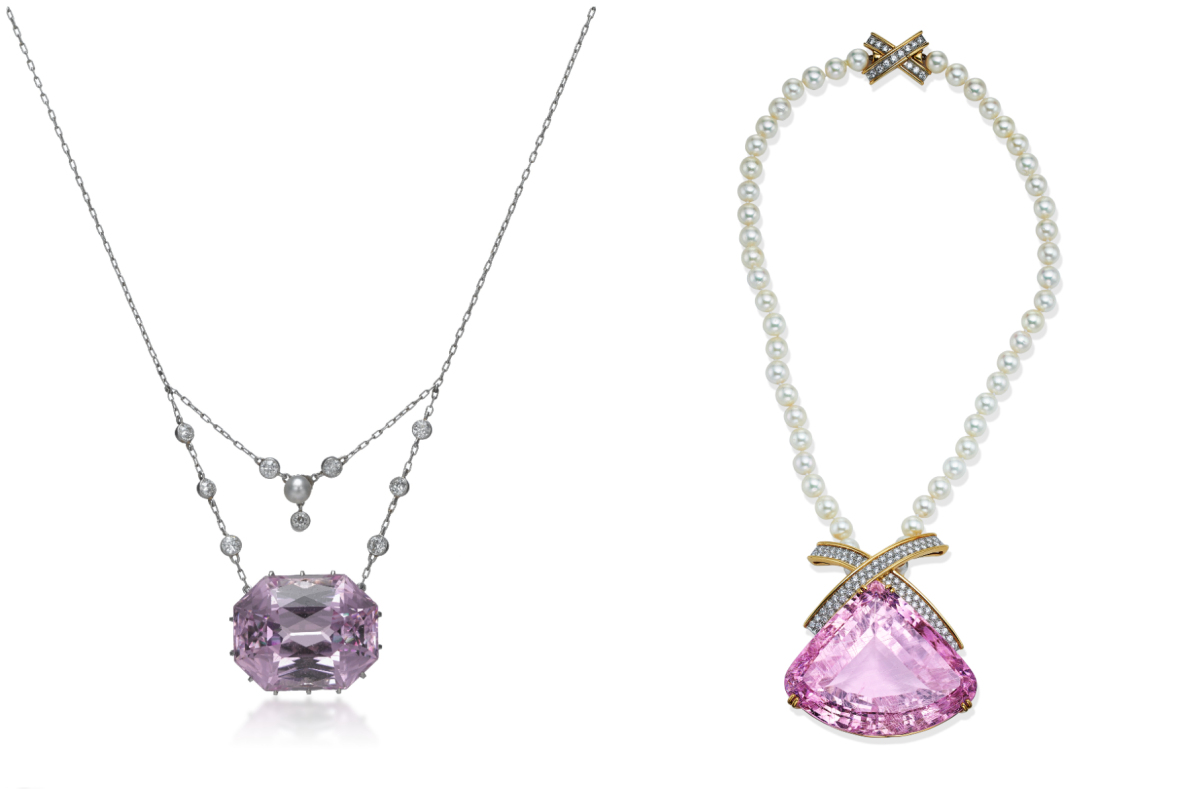
Above: Kunzite necklace from 1902–1915 (left); Kunzite necklace designed by Paloma Picasso in 1990 (right)
Tiffany’s relationship with kunzite has endured for over a century. So, when presented with the rare opportunity to acquire this magnificent specimen, it’s no surprise that Anthony Ledru made the decision without hesitation.
Why Is Acquiring “Exceptional Gemstones” a Top Priority at Tiffany & Co.?
This major acquisition is a natural continuation of Tiffany’s longstanding tradition of discovering rare and precious gemstones.
In 1877, the brand’s founder, Charles Lewis Tiffany, made headlines across the global jewelry industry with the purchase of the rare 287.42-carat yellow diamond known as the “The Tiffany Diamond.” Since then, Tiffany has consistently explored and introduced new varieties of gemstones, adding several extraordinary specimens to the world’s gemstone repertoire.
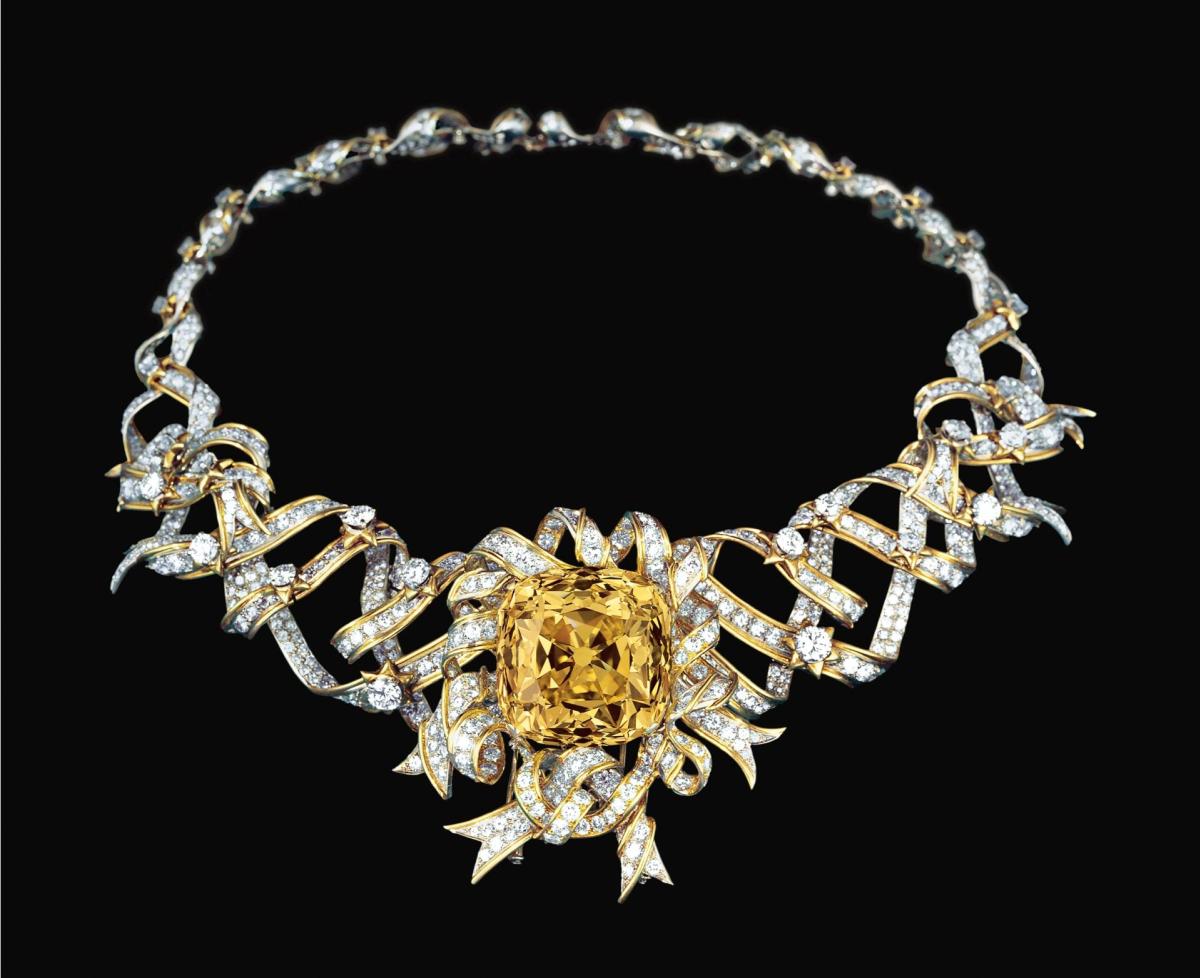
Above: The Tiffany Diamond Ribbon Necklace, designed by Jean Schlumberger
Among them, kunzite, morganite, tanzanite, and tsavorite are hailed as Tiffany’s “Four Legendary Gemstones.” All four were either named by Tiffany or first introduced into high jewelry design by the brand.
These gemstones reflect Tiffany’s deep connections with generations of pioneering gemologists.
For example, morganite, a new variety of pink beryl, was discovered by Dr. George Frederick Kunz in Madagascar in 1910. He named it in honor of J.P. Morgan, the loyal Tiffany client and banker who continuously supported Kunz’s global gem exploration efforts.
Tanzanite and tsavorite, meanwhile, were named by Tiffany after their exclusive places of origin, Tanzania and Kenya’s Tsavo National Park, respectively, and were first introduced by the brand in 1968 and 1974.
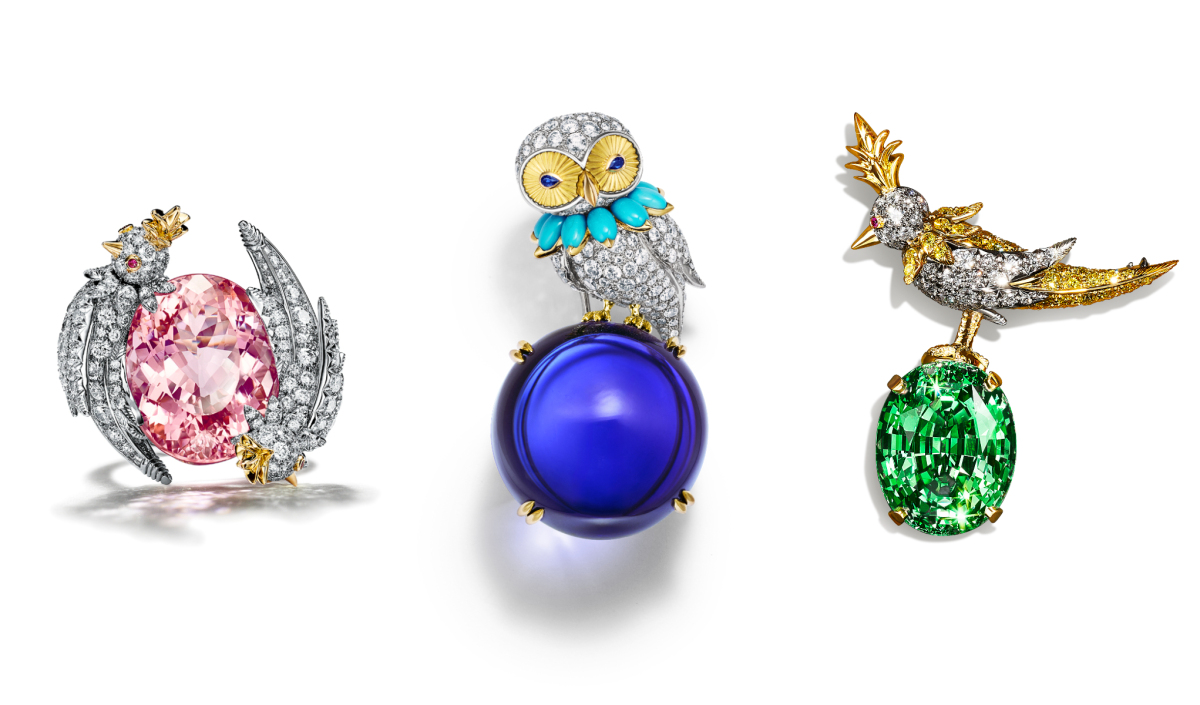
Above, from left to right: Jewelry pieces crafted with morganite, tanzanite, and tsavorite
Through its bold investments and strategic acquisitions of rare gems, Tiffany has continuously reinforced its leadership in the high jewelry arena. In this sector, ownership of rare gemstone sources remains a critical benchmark of brand strength.
Tiffany & Co. CEO Anthony Ledru noted in an interview with The New York Times that since he joined the brand in 2021, acquiring noteworthy gemstones has been a top priority. “To reinvest heavily in exceptional stones — not good stones, not very good stones, but exceptional stones — and we’ve done it,” he emphasized.
Tiffany’s distinct approach to gem discovery is also a reflection of its highly vertically integrated supply chain strategy. Unlike many jewelry houses that rely on second- or third-tier markets, Tiffany regularly purchases rough stones in bulk directly from its diamond mining partners.
To strengthen this edge, Tiffany has established a rare and specialized gemological research division dedicated to the development of high jewelry materials. In 2020, Victoria Wirth Reynolds (pictured below) was appointed head of this department, becoming Tiffany’s first-ever female Chief Gemologist and Vice President of High Jewelry Diamond and Gemstone Acquisition.

Under her leadership, Tiffany has significantly expanded its gemstone reserves through a series of major acquisitions in recent years:
- January 2023: Acquired a final bespoke curation of rare pink diamonds from the Argyle Diamond Mine in Australia;
- July 2023: Purchased a 10-carat-plus emerald from Colombia’s famed Muzo mine;
- October 2023: Acquired the largest rough Fancy Vivid Yellow diamond ever discovered in Canada, weighing over 71 carats, which Tiffany artisans later cut into two vivid yellow diamonds of over 20 and 15 carats respectively…
This unwavering control over gemstone sourcing and a steadfast commitment to gemological research have formed the foundation of Tiffany’s sustained leadership and competitive edge in the high jewelry industry.
The Three Pillars of Tiffany’s High Jewelry Strategy: Gemstones, Design, Craftsmanship
Tiffany will use its newly acquired, massive kunzite rough to meticulously craft 10 custom-cut gemstones, each to be set into a limited-edition “Bird on a Rock” brooch, commemorating the 60th anniversary of the iconic design.

Above: The over-7,500-carat kunzite alongside a “Bird on a Rock” brooch
According to Victoria Wirth Reynolds, the customized high jewelry brooches featuring kunzite will start at approximately $300,000. Clients will be able to choose from five gemstone shapes, each finished piece weighing around 45 carats—roughly the size of a large walnut. Several brooches have already been pre-ordered, and all pieces are expected to be completed by the end of December this year.
First created in 1965 by legendary Tiffany designer Jean Schlumberger, the “Bird on a Rock” brooch is one of Tiffany’s most iconic high jewelry creations. Its design was inspired by the lively posture of a cockatoo and is a vivid expression of Schlumberger’s celebration of nature’s beauty.
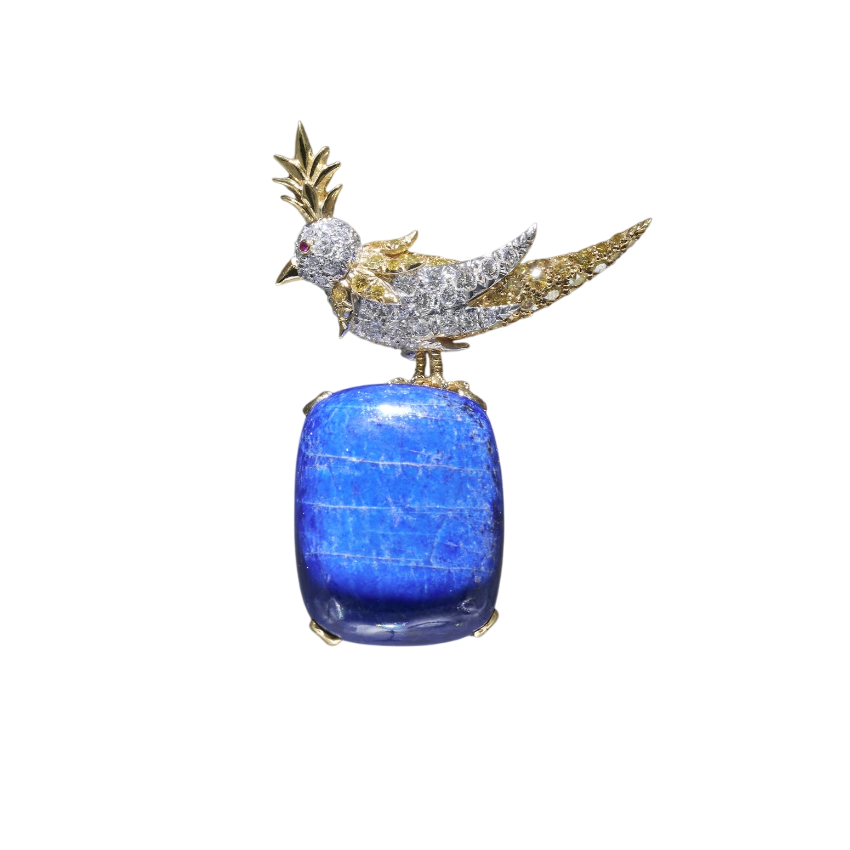
Above: The first “Bird on a Rock” brooch created by Jean Schlumberger in 1965, featuring lapis lazuli
Over the years, the brooch has been paired with many of Tiffany’s rarest gemstones—most famously in 1995, when it showcased the “The Tiffany Diamond,” the brand’s legendary 128.54-carat yellow diamond.
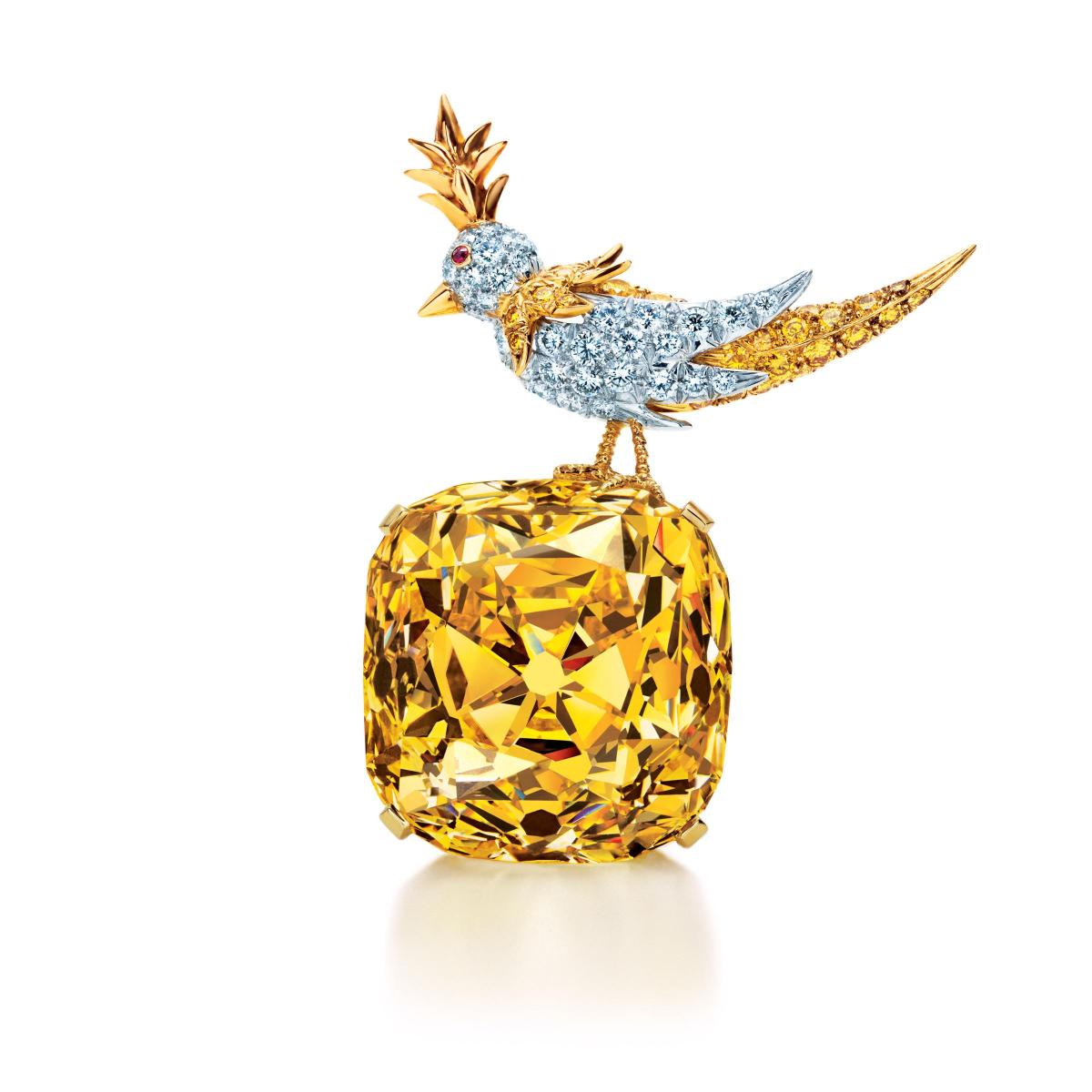
Above: The “The Tiffany Diamond” set in a “Bird of a Rock” brooch by Jean Schlumberger
Luxe.CO notes that in recent years, Tiffany has notably intensified its archival research, using a contemporary lens to reimagine classic designs. The most prominent example is the ongoing innovation around the “Bird on a Rock.”
Tiffany has continually pushed the boundaries of material for the brooch: from 2023 to 2025, it launched the Bird on a Pearl high jewelry collection, replacing the gemstone base with natural saltwater pearls. From 2023 to 2024, it also introduced three seasons of Rainbow Bird on a Rock brooches, incorporating a variety of materials—including enamel—to give the classic cockatoo silhouette a colorful new life.
%E7%8F%8D%E7%8F%A0%E7%9F%B3%E4%B8%8A%E9%B8%9F%E4%B9%8B%E7%81%B5%E9%B8%9F%E6%A0%96%E7%8F%A0%E7%AF%87%E7%AB%A0%E8%83%B8%E9%92%88-11.jpg?x-oss-process=image/resize,m_fill,w_1200,h_1175)
Above: Jean Schlumberger by Tiffany “Bird on a Pearl” brooch, from the “Spirit of the Bird” chapter
In a Rainbow Bird on a Rock brooch launched in May 2024, Tiffany paid homage to Schlumberger’s passion for enamel with exquisite craftsmanship. This particular brooch features an aquamarine over 100 carats, as well as paillonné enamel, a 19th-century technique that Jean Schlumberger is credited with reviving.
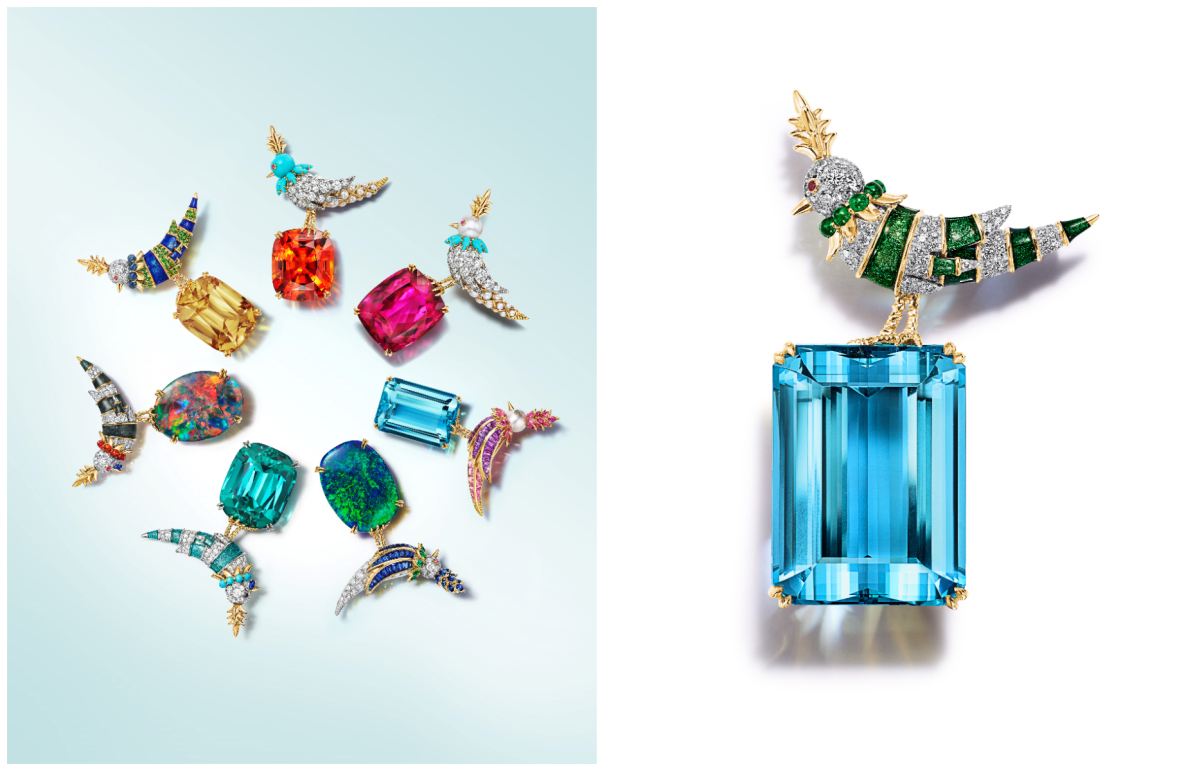
Above: Jean Schlumberger by Tiffany Rainbow Bird on a Rock brooch
In fact, beyond rare gemstones and timeless design, superb craftsmanship forms the third foundational pillar of Tiffany’s high jewelry strategy.
Since its founding, Tiffany has consistently elevated craftsmanship through rigorous in-house production. Today, Tiffany boasts one of the highest rates of in-house manufacturing in the jewelry industry. This percentage continues to grow thanks to ongoing vertical integration of its jewelry workshops.
In 2023, Tiffany’s parent company LVMH acquired a majority stake in French jewelry manufacturer Platinum Invest Group, which includes Orest—a jewelry producer established in 1963. According to French media outlet Le Journal des Entreprises, Orest opened its second jewelry workshop in eastern France in 2024. The new site is now responsible for producing Tiffany’s high-end jewelry pieces and is expected to dedicate 50% of its workshop capacity to Tiffany, contributing 20% of the brand’s total jewelry output.

Above: At Tiffany’s workshop in Pelham, a Tiffany diamond undergoes final assessment before being set into a metal mount
In the world of high jewelry—where “heritage” is especially revered—mastering the delicate balance between tradition and innovation and translating that into new momentum for brand growth is an eternal challenge. For Tiffany, with its 188-year history, this is especially significant.
When Tiffany was acquired by French luxury conglomerate LVMH in 2021, the brand was at a key turning point of renewal. While LVMH does not disclose individual brand financials, executives shared during the company’s FY2024 earnings call earlier this year that Tiffany’s profits have doubled since the acquisition, and its high jewelry sales have quadrupled.
From the 1877 purchase of a 287.42-carat yellow diamond rough—eventually cut into the 128.54-carat “Tiffany Diamond”—to the recent acquisition of the 7,500-carat kunzite; from the debut of the first “Bird on a Rock” brooch 60 years ago to the latest kunzite-set version now in high demand among collectors; from the upstairs jewelry workshop at Tiffany’s New York store over a century ago to the newly built facilities in France staffed by master artisans—the Tiffany story has remained unwavering for nearly two centuries, continuously guided by three enduring pillars: timeless design and creativity, relentless pursuit of rare gemstones, and an uncompromising commitment to high jewelry craftsmanship.
| Image Credit: Courtesy of the brand
| Editor: Zhu Ruoyu

